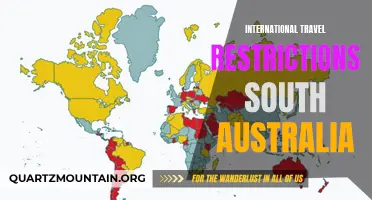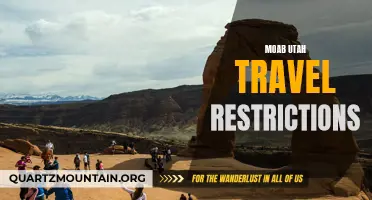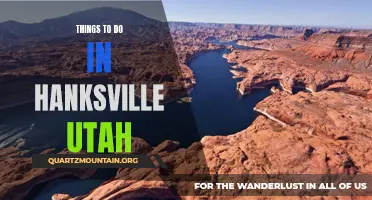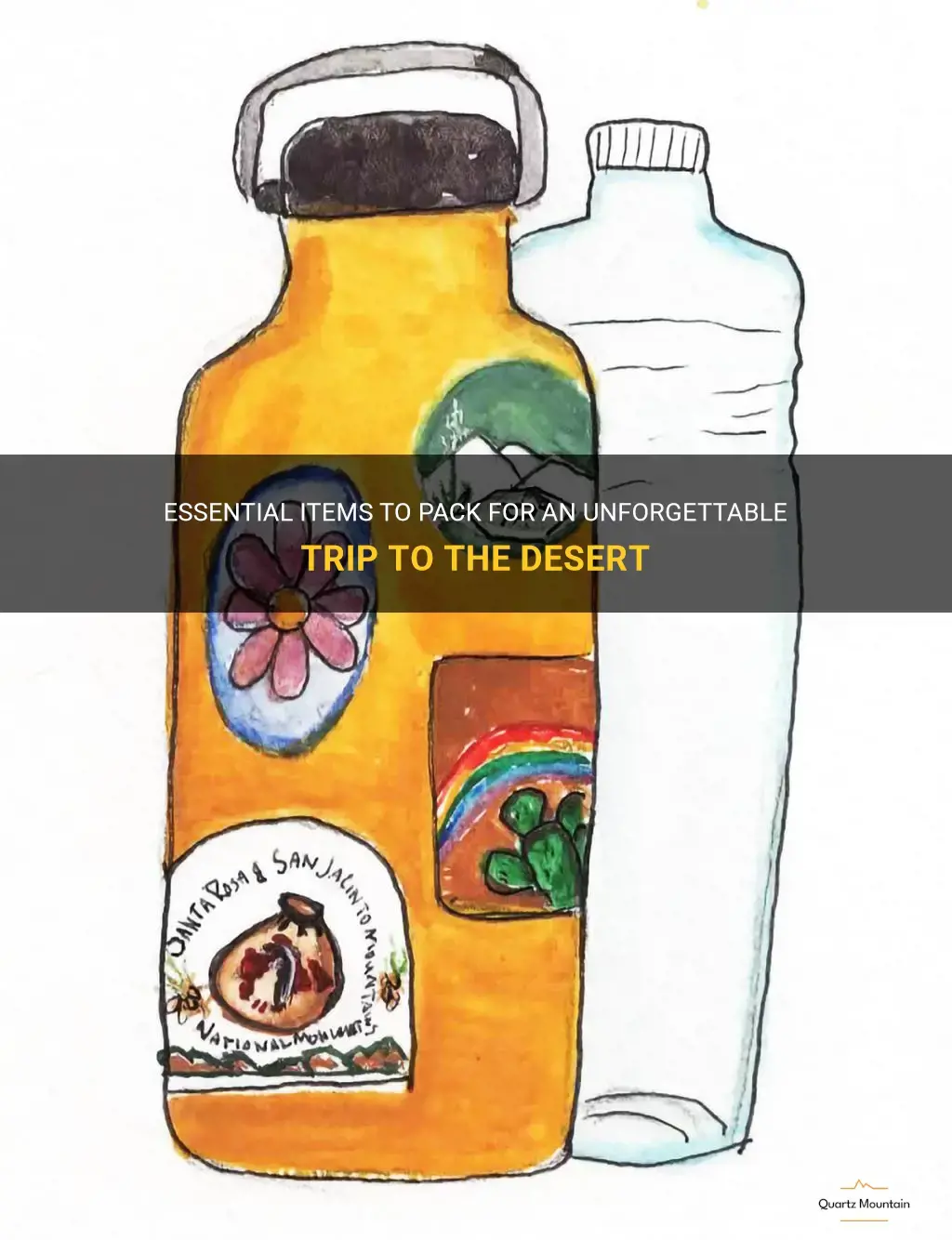
Heading out on a trip to the desert? Make sure you're well-prepared with the essentials! Whether you're venturing into the sandy dunes of the Sahara or exploring the rugged landscapes of the American Southwest, packing the right items is crucial for a successful desert adventure. From sun protection to hydration and emergency supplies, this guide will ensure that your trip to the desert is unforgettable for all the right reasons. So, grab your hat, sunglasses, and a water bottle, and let's delve into the must-have items for your desert escapade!
| Characteristics | Values |
|---|---|
| Clothing | Light-colored, loose-fitting clothes; long-sleeved shirts; pants; wide-brimmed hat; sunglasses |
| Footwear | Sturdy, closed-toe shoes; hiking boots; socks |
| Sun Protection | Sunscreen; lip balm with SPF; wide-brimmed hat; sunglasses |
| Hydration | Water bottles; water bladder; electrolyte solution |
| First Aid | Band-aids; antiseptic wipes; pain relievers; insect repellent; blister kits |
| Navigation | Maps; compass; GPS device |
| Shelter | Tent; sleeping bag; camping mat |
| Cooking Gear | Stove; pots and pans; cooking utensils; cooler; food storage containers |
| Light Source | Flashlight; headlamp; extra batteries |
| Personal Items | Toiletries; medications; towel; personal documents; cash |
| Emergency | Whistle; emergency signal mirror; emergency blanket; firestarter; multi-tool |
| Communication | Cell phone with charger; satellite phone; walkie-talkies; emergency contacts list |
| Entertainment | Books; playing cards; musical instruments; games |
| Miscellaneous | Backpack; camping chairs; binoculars; camera; extra clothes; trash bags |
What You'll Learn
- What are the essential items to pack for a trip to the desert?
- Are there any specific clothing items I should bring for the extreme temperatures of the desert?
- How much water should I bring on a desert trip and what are some additional hydration tips?
- Are there any special precautions or items I should pack for protection against the desert sun?
- What are some recommended outdoor gear and equipment to bring for a desert adventure?

What are the essential items to pack for a trip to the desert?
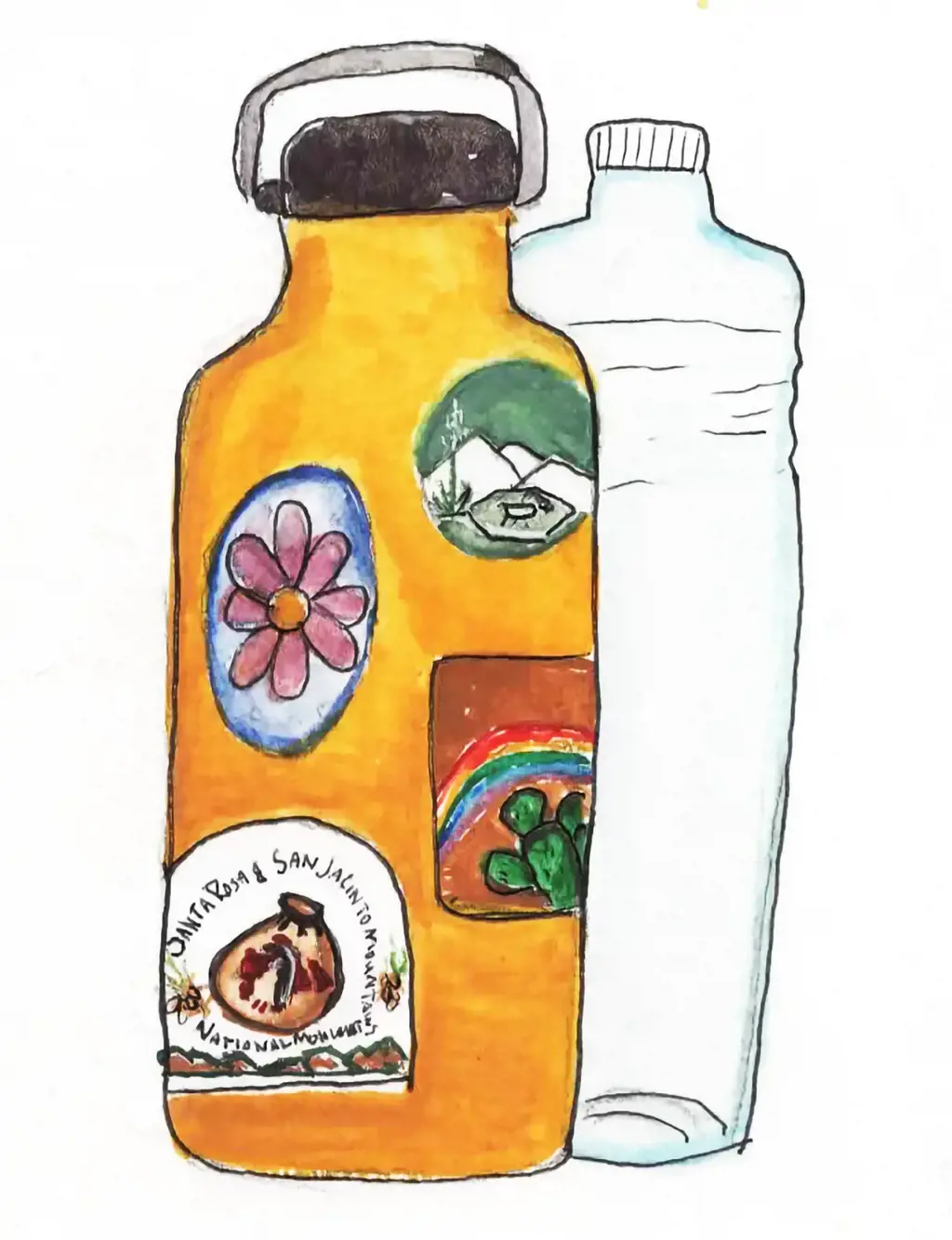
A trip to the desert can be an exciting and adventurous experience. However, the extreme conditions and lack of resources in the desert make it essential to pack the right items to ensure a safe and comfortable journey. Whether you are planning a short trek or a longer expedition in the desert, there are a few essential items that should be included in your packing list.
- Water: Staying hydrated is crucial when exploring the desert. The arid environment and high temperatures can quickly lead to dehydration. It is recommended to carry at least one gallon of water per person per day. Additionally, pack water purification tablets or a portable water filter to ensure a continuous supply of clean drinking water.
- Sun Protection: The desert sun can be intense, so it's important to protect yourself from harmful UV rays. Pack sunscreen with a high SPF, lip balm with SPF, and a wide-brimmed hat to shield your face and neck from direct sunlight. Sunglasses with UV protection are also essential to protect your eyes from the bright desert glare.
- Clothing: Choose lightweight, breathable clothing that provides coverage from the sun. Opt for long-sleeved shirts, loose-fitting pants, and a wide-brimmed hat. A lightweight, moisture-wicking fabric is ideal for desert conditions. Don't forget to pack a few layers for cooler nights, as desert temperatures can drop significantly after sunset.
- Shelter: Depending on the duration of your trip, you may need to bring some form of shelter. A lightweight, durable tent or a sturdy hammock can provide much-needed protection from the sun during the day and the cold desert nights. Make sure to also pack a groundsheet or tarp to protect against sand and rocks.
- Navigation and Communication: The vastness of the desert can make navigation challenging. Bring a reliable compass, a good map, and a GPS device if possible. It is also advisable to have a satellite phone or a personal locator beacon (PLB) for emergency situations, as cell phone coverage may be limited or nonexistent in remote desert areas.
- First Aid Kit: Accidents can happen anywhere, so it is essential to pack a well-stocked first aid kit. Include items such as bandages, disinfectant, adhesive tape, pain relievers, and any necessary prescription medications. Familiarize yourself with basic first aid procedures before your trip.
- Food: Pack lightweight, non-perishable food items that can withstand the desert heat. Energy bars, nuts, dried fruit, and jerky are all good options. Don't forget to bring a few extra days' worth of food in case of unexpected delays.
- Emergency Supplies: In addition to a first aid kit, it is important to have some emergency supplies on hand. Include items like a flashlight with extra batteries, a whistle, a multipurpose tool, a fire starter kit, a signaling mirror, and extra ropes or cords.
- Personal Hygiene Items: Camping in the desert can get dusty and dirty, so bring personal hygiene items to stay clean and refreshed. Pack wet wipes, hand sanitizer, a small towel, toilet paper, and any other necessary toiletries.
- Extra Supplies: It's always a good idea to have some extra supplies on hand in case of unforeseen circumstances. Pack extra batteries, a backup phone charger, a spare set of car keys, and a repair kit for any camping gear or equipment.
By packing these essential items, you'll be well-prepared for your trip to the desert. Remember to do thorough research on the specific desert region you'll be visiting and take additional precautions accordingly. Stay safe and enjoy your desert adventure!
Essential Items to Pack for Basic Military Training
You may want to see also

Are there any specific clothing items I should bring for the extreme temperatures of the desert?
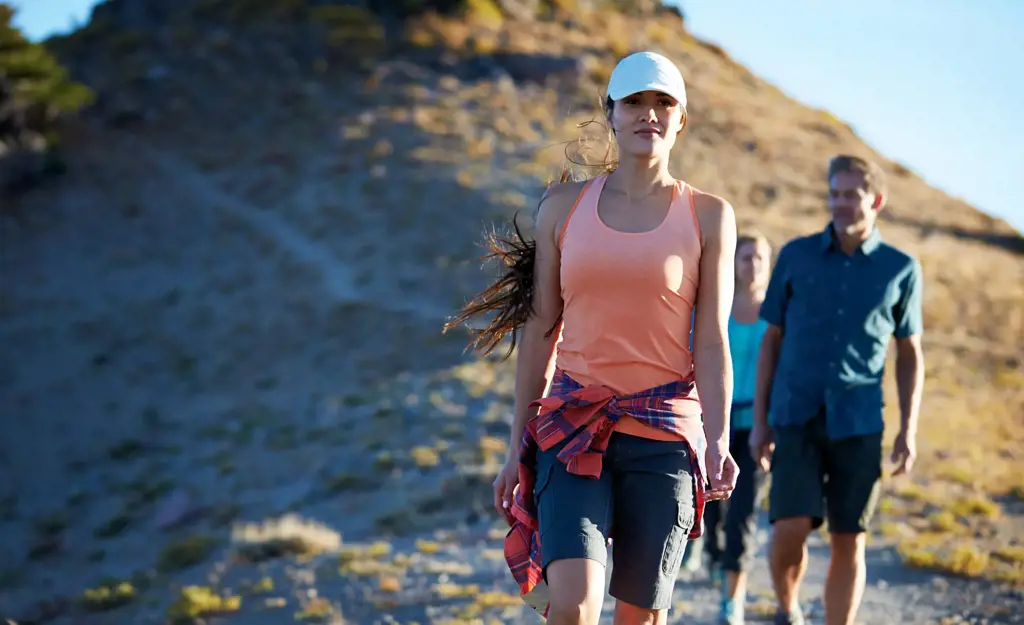
Visiting a desert can be an exciting adventure, but it also requires careful preparation, especially when it comes to clothing. The extreme temperatures of the desert, with scorching heat during the day and freezing cold at night, demand specific clothing items to ensure comfort and safety. Whether you are planning a hike through the sand dunes or camping under the starry sky, here are some essential clothing items you should consider packing for your desert expedition.
Lightweight and breathable fabrics:
The first rule of desert clothing is to opt for lightweight and breathable fabrics that allow air circulation and help to wick away sweat. Materials like cotton, linen, and lightweight synthetic blends are excellent choices. These fabrics will help keep you cool during the hot daytime temperatures and prevent overheating.
Long-sleeved loose clothing:
Contrary to popular belief, covering up your skin is a smart strategy in the desert. Loose, long-sleeved clothing acts as a barrier between your skin and the harsh sun rays, preventing sunburn and blocking sand and other particles from directly touching your skin. Look for loose-fitting shirts and pants made of breathable materials.
Wide-brimmed hat:
Protecting your head and face from the scorching desert sun is crucial. A wide-brimmed hat offers shade and helps to shield your face, neck, and ears from harmful UV rays. Choose a hat made of lightweight material and ensure it fits securely to withstand desert wind.
Sunglasses:
Invest in a good pair of sunglasses with UV protection. The intense sunlight and glare in the desert can strain your eyes and even lead to temporary blindness. Sunglasses not only protect your eyes but also make it easier to see in bright conditions.
Sunscreen:
No desert clothing list is complete without sunscreen. Opt for a broad-spectrum sunscreen with a high SPF. Apply it generously and frequently to all exposed areas of your skin, even on cloudy days. Sunscreen will protect your skin from sunburn and reduce the risk of skin cancer.
Closed-toe shoes:
Choose sturdy closed-toe shoes that provide ample support and protection for your feet. Sandals may seem tempting for the desert, but they expose your feet to the elements and are not suitable for hiking or protecting against desert critters. Closed-toe shoes will shield your feet from the hot sand and keep them safe from rocks, cacti, and other potential hazards you may encounter.
Layered clothing:
Deserts experience extreme temperature fluctuations between day and night. The temperature can drop significantly after the sun sets, so it's essential to pack layered clothing. Long-sleeved shirts, light sweaters, and a warm jacket will help you stay comfortable during chilly desert nights.
Breathable socks:
Just as important as the shoes you choose, breathable socks are crucial for desert treks. Moisture-wicking socks made of natural or synthetic fibers will help keep your feet dry and comfortable while preventing blisters and fungal infections.
Remember, the key to desert clothing is to prioritize protection from the sun, breathability, and adaptability to changing temperatures. By considering these specific clothing items and packing accordingly, you will be better equipped to enjoy your desert adventure, whatever the temperature may be.
Essential Gear for Hiking with Dogs: What to Pack for Your Next Adventure
You may want to see also

How much water should I bring on a desert trip and what are some additional hydration tips?
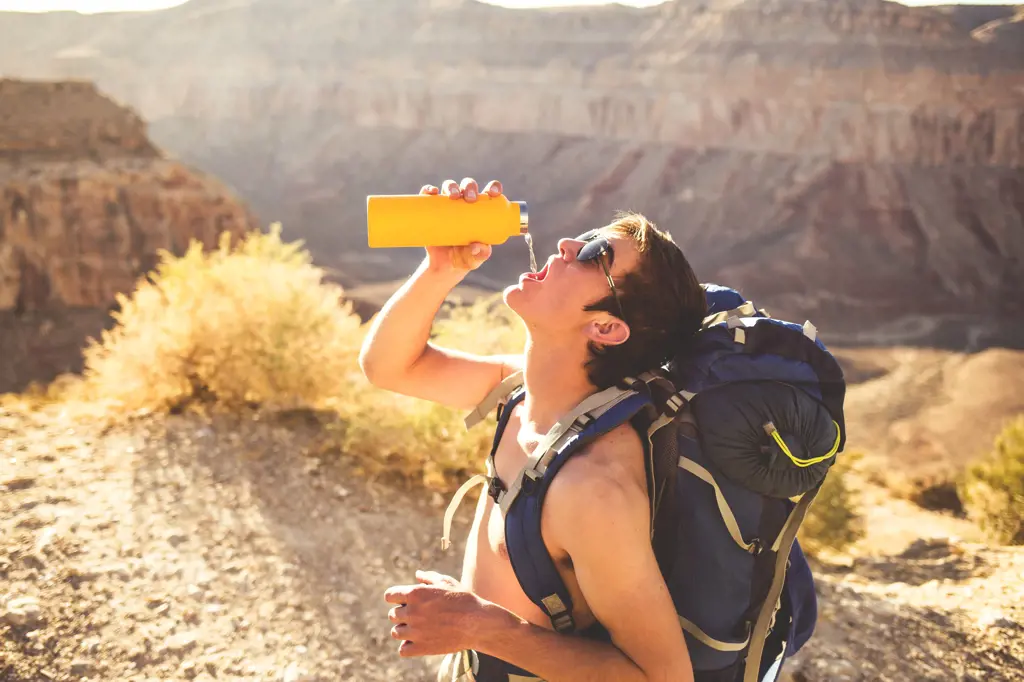
When venturing into the desert, it is crucial to stay hydrated due to the intense heat and dry climate. Dehydration can lead to a multitude of health issues, including dizziness, fatigue, heat stroke, and even death. To prevent this, it is essential to bring an ample supply of water and practice proper hydration techniques. In this article, we will discuss how much water you should bring on a desert trip and provide some additional hydration tips.
The amount of water you should bring on a desert trip depends on several factors, including the length of your trip, your activity level, and the temperature of the area you will be exploring. As a general rule, it is recommended to bring at least one gallon (3.8 liters) of water per person per day. This amount should be adjusted accordingly if you will be engaging in strenuous activities or if the temperature is exceptionally high.
In addition to carrying enough water, there are several hydration tips that can help you stay properly hydrated in the desert. These include:
- Start Hydrating Before Your Trip: Begin increasing your fluid intake a few days before your trip. This will ensure that your body starts off properly hydrated.
- Drink Water Frequently: In the desert, it is crucial to drink water frequently, even if you do not feel thirsty. Thirst is not always an accurate indicator of hydration levels, so it is important to make a conscious effort to drink water regularly throughout the day.
- Sip, Don't Guzzle: Instead of guzzling large amounts of water at once, sip water slowly and steadily throughout the day. This allows your body to absorb the water more effectively and prevents overwhelming your kidneys.
- Pack Electrolyte-rich Drinks: In addition to water, it is beneficial to pack electrolyte-rich drinks, such as sports drinks or electrolyte tablets. Electrolytes help replenish essential minerals lost through sweating and can enhance your body's ability to retain water.
- Avoid Caffeine and Alcohol: Both caffeine and alcohol can increase dehydration, so it is best to avoid consuming these beverages while in the desert. Stick to water and electrolyte-rich drinks to maintain optimal hydration levels.
- Protect Yourself from the Sun: In addition to drinking enough water, it is essential to protect yourself from the sun's harmful rays. Wear a wide-brimmed hat, lightweight and breathable clothing, and apply sunscreen regularly. Sunburns can increase your risk of dehydration and heat-related illnesses.
- Conserve Water: While it is crucial to stay hydrated, it is also important to conserve water during your desert trip. Use water sparingly for tasks such as cooking, cleaning, and personal hygiene. Additionally, consider using wet wipes or hand sanitizers as an alternative to water for certain tasks.
In conclusion, staying properly hydrated is of utmost importance when embarking on a desert trip. Bring at least one gallon of water per person per day and adjust accordingly based on factors such as the length of your trip, activity level, and temperature. Remember to start hydrating before your trip, drink water frequently, sip water slowly, and bring electrolyte-rich drinks. Avoid caffeine and alcohol, protect yourself from the sun, and conserve water whenever possible. By following these hydration tips, you can enjoy a safe and enjoyable desert adventure.
Essential Items to Pack for Your Trip to Cambodia
You may want to see also

Are there any special precautions or items I should pack for protection against the desert sun?
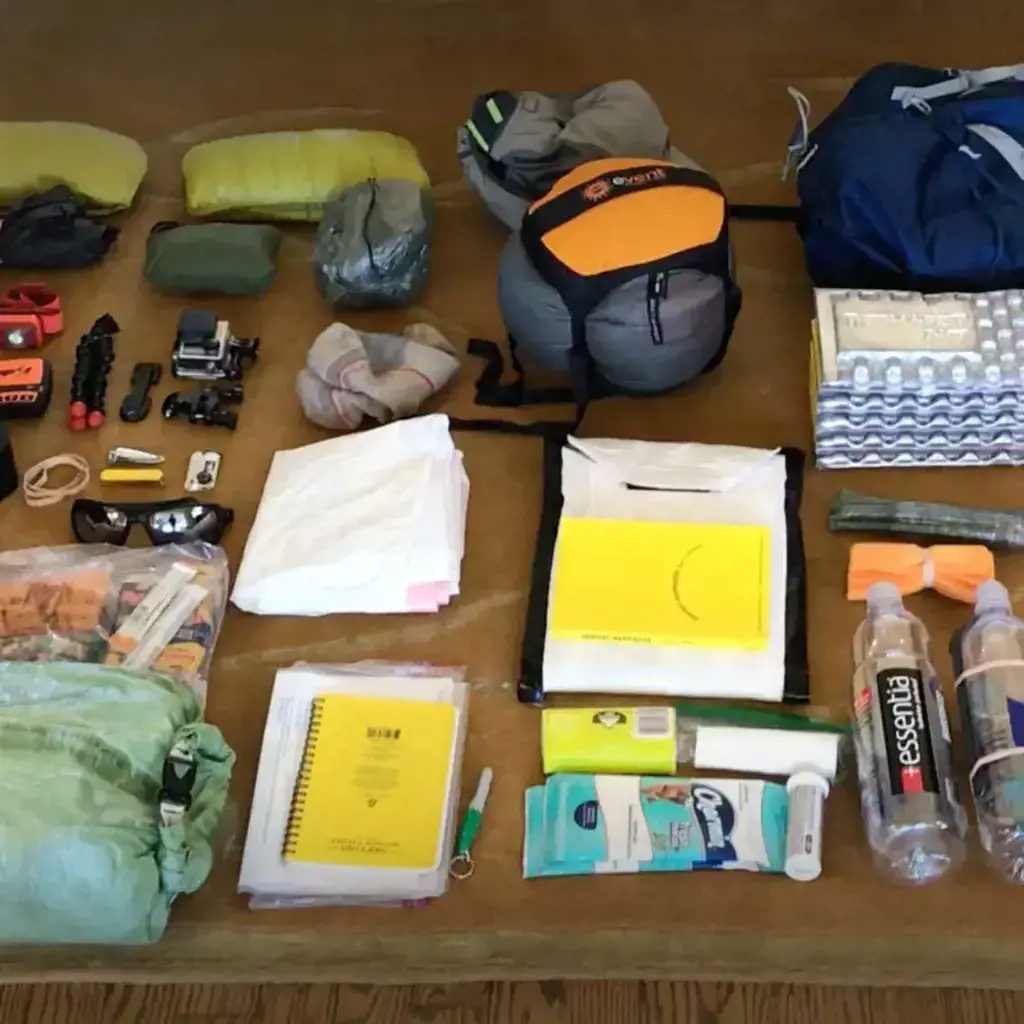
If you are planning a trip to the desert, it is important to take precautions to protect yourself from the intense rays of the sun. The desert sun can be particularly harsh, and without proper protection, you are at risk of sunburn, heatstroke, and other heat-related illnesses.
Here are some special precautions you should take and items you should pack to protect yourself from the desert sun:
- Wear protective clothing: One of the best ways to protect yourself from the sun is by covering up. Wear loose-fitting, lightweight clothing that covers as much skin as possible. Opt for long-sleeved shirts, long pants, and wide-brimmed hats to shield your face and neck from direct sunlight. The clothing should be made from breathable materials that allow air circulation and help you stay cool.
- Apply sunscreen: Sunscreen is a must when you are exposed to the desert sun. Choose a broad-spectrum sunscreen with a high SPF (sun protection factor) of 30 or higher. Apply it generously to all exposed areas of your skin, including the face, neck, arms, and legs. Remember to reapply every two hours or after sweating or swimming.
- Use sunglasses: Protect your eyes from harmful UV radiation by wearing sunglasses that offer 100% UV protection. Look for sunglasses with a wraparound design to provide maximum coverage and minimize glare. This will not only protect your eyes but also prevent squinting, which can lead to premature wrinkles around the eyes.
- Bring a wide-brimmed hat: A wide-brimmed hat is essential for protecting your face, neck, and ears from the desert sun. Choose a hat with a brim that is at least three inches wide to provide adequate shade. Additionally, consider a hat with a ventilation system, like mesh panels or breathable fabric, to allow airflow and keep your head cool.
- Stay hydrated: In the desert, staying hydrated is crucial to prevent heat-related illnesses. Pack plenty of water and drink it regularly, even if you don't feel thirsty. Avoid or limit the consumption of alcohol and caffeinated beverages as they can contribute to dehydration. Consider using a refillable water bottle to minimize waste and ensure you have access to clean drinking water at all times.
- Seek shade: Whenever possible, seek shade to escape the direct sun. Look for natural shade provided by trees, rocks, or buildings. If natural shade is not available, create your shade using an umbrella or a portable canopy. Taking regular breaks in the shade will help prevent overheating and sunburn.
- Plan activities around peak sun hours: The sun's rays are strongest between 10 AM and 4 PM. During these hours, try to plan indoor or shaded activities to minimize sun exposure. If you need to be outside, take extra precautions, such as wearing protective clothing and applying sunscreen more frequently.
- Be aware of the signs of heat-related illnesses: It is important to know the signs and symptoms of heat-related illnesses, such as heat exhaustion and heatstroke. These can include excessive sweating, dizziness, nausea, headache, rapid heartbeat, and confusion. If you or someone with you experiences any of these symptoms, seek shade, hydrate, and seek medical attention if necessary.
In conclusion, protecting yourself from the desert sun requires special precautions and packing the right items. By wearing protective clothing, applying sunscreen, using sunglasses and a wide-brimmed hat, staying hydrated, seeking shade, planning activities wisely, and being aware of heat-related illnesses, you can enjoy your time in the desert while minimizing the risks associated with the intense sun.
Essential Items to Pack for UEL Students
You may want to see also

What are some recommended outdoor gear and equipment to bring for a desert adventure?
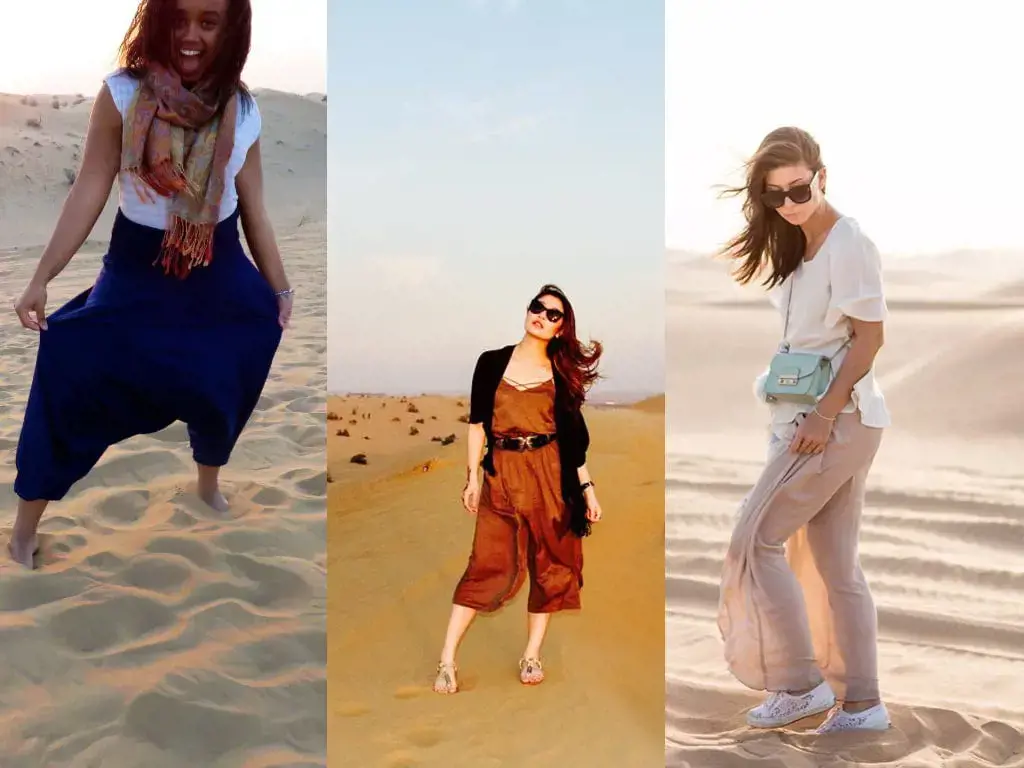
When embarking on a desert adventure, it is crucial to be well-prepared with the right gear and equipment. The harsh and unforgiving desert environment poses many challenges, including extreme temperatures, scarce water sources, and rugged terrain. To ensure a safe and enjoyable desert experience, here are some recommended outdoor gear and equipment to bring along.
Sun Protection:
Deserts are notorious for their scorching heat and intense sunlight. Protecting yourself from the sun's harmful rays is essential. Carry a wide-brimmed hat or a desert scarf to shield your face and neck from the sun. Additionally, wear sunglasses with UV protection to protect your eyes. Don't forget to apply a high SPF sunscreen to exposed skin, and bring lip balm with SPF to prevent chapped lips.
Clothing:
Choose lightweight, breathable clothing with long sleeves and pants to protect your skin from the sun and sand. Opt for moisture-wicking materials to keep you cool and dry as you sweat. Avoid dark-colored clothing that absorbs heat and instead go for light-colored clothing that reflects sunlight. Don't forget to bring a warm layer for chilly desert nights.
Footwear:
Invest in a sturdy pair of hiking boots or trail shoes that provide ankle support and have a good grip. Desert terrain can be uneven and rocky, making proper footwear essential. Consider wearing gaiters to keep sand and pebbles out of your shoes. Pack extra pairs of socks to prevent blisters and keep your feet dry and comfortable.
Navigation and Communication:
In the vast expanse of a desert, it's easy to get disoriented. Carry a reliable compass and a map of the area. Familiarize yourself with the basic principles of navigation. Bringing along a GPS device or a smartphone with offline maps can also be handy. Ensure that you have a fully charged phone and a backup power bank for emergency situations.
Water and Hydration:
Staying hydrated in the desert is crucial. Carry a sufficient amount of water based on the length of your adventure. It is recommended to carry at least one gallon (3.8 liters) of water per day per person. Use a hydration bladder or water bottles that are easy to refill. Additionally, consider bringing water purification tablets or a filtration system to treat water from natural sources if needed.
First Aid Kit:
A well-stocked first aid kit is a must-have for any outdoor adventure. It should include items such as bandages, adhesive tape, antiseptic wipes, pain relievers, insect repellent, and any personal medications you may need. Familiarize yourself with basic first aid procedures before heading into the desert.
Camping Gear:
If camping overnight in the desert, bring appropriate gear such as a lightweight and compact tent, sleeping bag, sleeping pad, and a reliable camping stove. It's advisable to choose a tent that provides good ventilation to combat the heat. Don't forget to pack a headlamp or flashlight and extra batteries for visibility during night-time activities.
Emergency Supplies:
Prepare for unexpected situations by packing emergency supplies. These may include a whistle to signal for help, a signal mirror, a fully stocked survival kit, an emergency blanket, and a multi-tool. It's also wise to inform someone of your itinerary before heading into the desert and to carry a personal locator beacon (PLB) for additional safety.
By having the right gear and equipment, you can ensure a safe and enjoyable desert adventure. Remember to plan ahead, research the specific requirements of your chosen desert region, and always prioritize safety. With the appropriate gear, you can make the most of your time in the desert and create unforgettable memories.
The Essential Packing List for a Memorable 1 Week Stay in Seattle
You may want to see also
Frequently asked questions
When packing for a trip to the desert, it's important to bring lightweight, loose-fitting clothing that will cover your skin and protect you from the sun. Opt for long-sleeved shirts and pants made from breathable fabrics like cotton or linen. Additionally, don't forget to bring a wide-brimmed hat, sunglasses, and a lightweight scarf or bandana to shield your face and neck from the sun's rays.
When exploring the desert, it's important to have sturdy, closed-toe shoes that provide protection and support. Opt for hiking boots or trail shoes that are comfortable, lightweight, and have a good grip. It's also a good idea to bring a pair of sandals or flip-flops for relaxing and letting your feet breathe at the end of the day.
To prepare for the extreme temperatures in the desert, it's essential to pack and hydrate properly. Be sure to bring plenty of water and hydrating fluids to stay hydrated throughout the day. It's also advisable to bring a portable water filter or purification tablets in case you run out of water. Additionally, pack sunscreen with a high SPF, and use it generously to protect your skin from the relentless desert sun.
Yes, there are a few essential items you should include in your packing list for a desert trip. These include a reliable, high-quality compass and map for navigation purposes, a well-stocked first aid kit, a sturdy backpack to carry your essentials, a flashlight or headlamp with extra batteries for nighttime visibility, and a lightweight sleeping bag if you plan on camping. Additionally, it's a good idea to pack a portable phone charger and any necessary medications.




